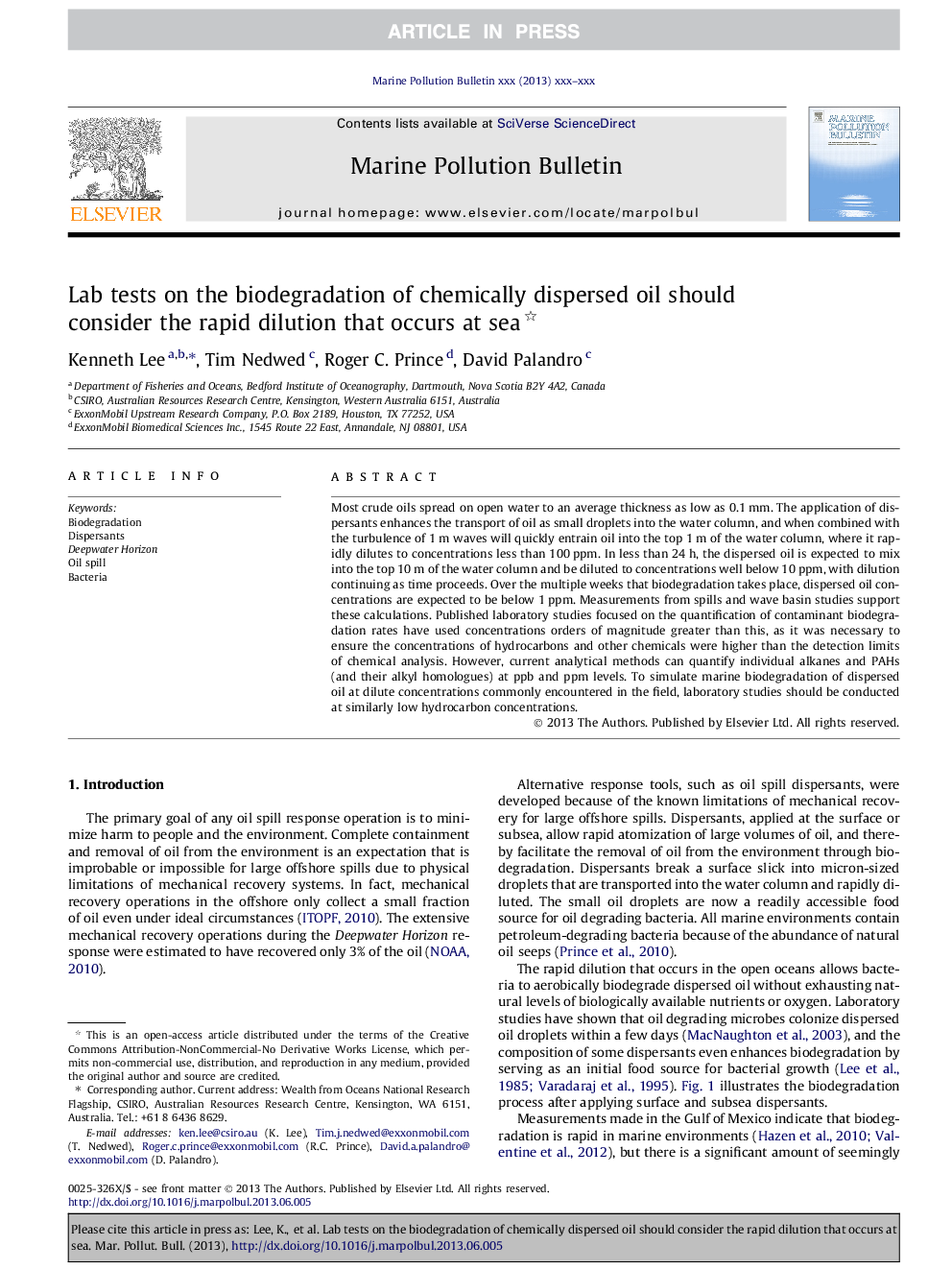| Article ID | Journal | Published Year | Pages | File Type |
|---|---|---|---|---|
| 6359466 | Marine Pollution Bulletin | 2013 | 5 Pages |
Abstract
Most crude oils spread on open water to an average thickness as low as 0.1Â mm. The application of dispersants enhances the transport of oil as small droplets into the water column, and when combined with the turbulence of 1Â m waves will quickly entrain oil into the top 1Â m of the water column, where it rapidly dilutes to concentrations less than 100Â ppm. In less than 24Â h, the dispersed oil is expected to mix into the top 10Â m of the water column and be diluted to concentrations well below 10Â ppm, with dilution continuing as time proceeds. Over the multiple weeks that biodegradation takes place, dispersed oil concentrations are expected to be below 1Â ppm. Measurements from spills and wave basin studies support these calculations. Published laboratory studies focused on the quantification of contaminant biodegradation rates have used concentrations orders of magnitude greater than this, as it was necessary to ensure the concentrations of hydrocarbons and other chemicals were higher than the detection limits of chemical analysis. However, current analytical methods can quantify individual alkanes and PAHs (and their alkyl homologues) at ppb and ppm levels. To simulate marine biodegradation of dispersed oil at dilute concentrations commonly encountered in the field, laboratory studies should be conducted at similarly low hydrocarbon concentrations.
Related Topics
Physical Sciences and Engineering
Earth and Planetary Sciences
Oceanography
Authors
Kenneth Lee, Tim Nedwed, Roger C. Prince, David Palandro,
